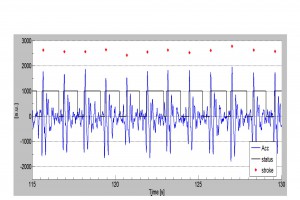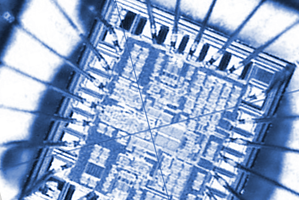Regius Professor Chris Toumazou will present his ideas for how semiconductor technology can be used in consumer devices for the early detection and therapy of human diseases in the Gabor lecture at Imperial College, London on 23 June. Toumazou has developed an approach to healthcare technology called U+ Life which he says can provide personalised healthcare for early detection, point ...
Medical Electronics
Content related to medical electronics
Light activated muscles could treat laryngeal paralysis
Researchers at the University of Bonn have found a way to stimulate the larynx muscles of mice using light. It is believed the technique could be used in humans for the treatment of laryngeal paralysis, which causes difficulties in phonation and breathing. How is light able to create nerve stimulation in muscles? This is based on molecules known as Channelrhodopsins, first discovered in ...
Irish medical device firm snapped up by Molex
ProTek Medical the Ireland-based medical device design house has been acquired by Molex. Headquartered in Silgo, ProTek Medical has designed products for applications that include cardiac rhythm management components, infusion finished devices, and vascular delivery devices. As well as design and engineering the company also carries out manufacturing, finished assembly and testing of critical medical devices. “This strategic acquisition broadens the ...
Imec’s Milab medical game-changer
Imec and John Hopkins University of Baltimore have delivered a “game-changer in healthcare” with a chip-based technology called Milab which analyses molecules or cells in bodily fluids, such as DNA, proteins, viruses, and blood cells.
NHS-funded project to create EMG control device
A smart switch to help people who have acute brain injury or severe disabilities using tiny electrical signals produced by muscles, called electromyography (EMG), to communicate is being developed by GSPK Design, working in partnership with Barnsley Hospital and the NIHR Devices for Dignity Healthcare Technology Co-operative (D4D). Knaresborough electronics design company, GSPK Design has received £76,000 for the initial development contract ...
MEMS device can detect the volume of a heart beat
A relatively new healthcare application for MEMS (micro electromechanical system) accelerometers is that of measuring a patient’s heart rate. Called ballistocardiology (BCG), a MEMS sensor is able to monitor the function of the heart through the recoil effect caused by the blood flowing into the aorta. An electrocardiogram (ECG) has been the traditional method of measuring the heart’s function through ...
Micropump can target epilepsy sufferers
Researchers in France have developed an organic electronic micropump for applying epileptic seizure inhibiting drugs directly into brain tissue. To treat neurological disorders such as epilepsy it is necessary to act at exactly the right time and place in the brain. The epilepsy drugs can become ineffective if not administered accurately or indeed the drugs themselves may be toxic to ...
Vital-Radio samples wireless health monitoring
It happens the moment you walk in: without you being aware of it, an undercover system discreetly records your breathing and heartbeat. Welcome to the Katabi Lab, part of the Computer Science and Artificial Intelligence Laboratory at the Massachusetts Institute of Technology. Called Vital-Radio, the system needs no sensors attached to the body, yet is nearly as accurate as conventional ...
UK healthcare plan offers digital tech opportunity
Electronics technologies are changing the way healthcare is provided and UK-based start-ups are lining up to take advantage of this potentially large business opportunity. Government plans to change the way long-term healthcare is provided will open up new opportunities for technology start-ups to address an emerging market. The long-term healthcare market is currently worth over £20bn to the UK economy ...
Built-in self test firm targets medical devices
Escatec says it can now write the built-in self test (BIST) programs for production testing that links into National Instruments LabVIEW/TestStand PC test software. According to Michael Walser, head of global R&D at Escatec: “Writing the software programs that test the device and interface between the microcontroller and the production test PC is not a core competence of most customers but ...
 Electronics Weekly Electronics Design & Components Tech News
Electronics Weekly Electronics Design & Components Tech News






